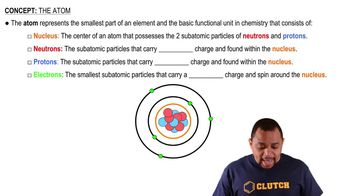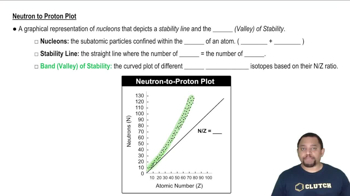Textbook Question
How many protons, neutrons, and electrons are in each of the following atoms? (b)
2
views

 Verified step by step guidance
Verified step by step guidance



How many protons, neutrons, and electrons are in each of the following atoms? (b)
How many protons, neutrons, and electrons are in each of the following atoms? (c)
How many protons, neutrons, and electrons are in each of the following atoms? (d)
How many protons and neutrons are in the nucleus of the following atoms? (b)
How many protons and neutrons are in the nucleus of the following atoms? (c)
How many protons and neutrons are in the nucleus of the following atoms? (d)